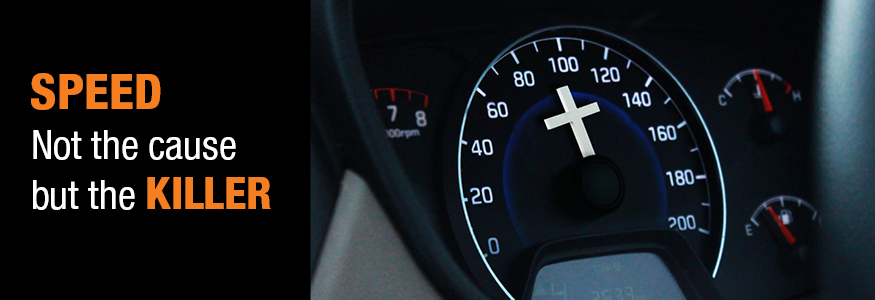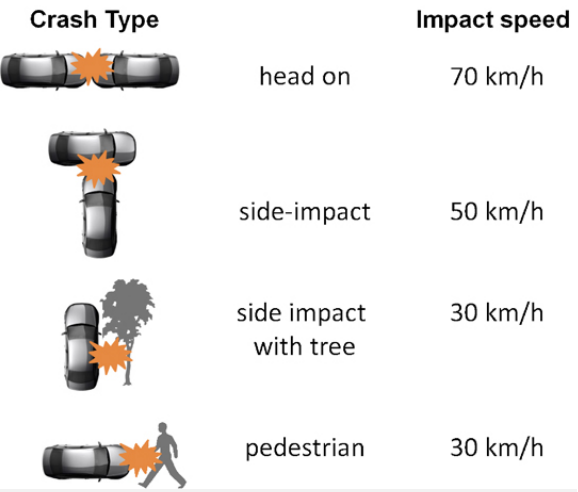Slower speeds save lives

Speed isn’t always the cause of a crash, but it is one of the primary reasons people are dying on our roads.
Over the last five years, 100% of all fatalities in Selwyn occurred on roads with speed limits over 70km/hr. This doesn’t mean that these crashes were caused by exceeding the speed limit, it means that in many cases, the speed at the point of impact was too great for the occupants to survive the crash.
The way we set speeds in Selwyn is changing.
In Aotearoa New Zealand, Councils are required to set speed limits for local roads and the New Zealand Transport Agency Waka Kotahi sets the speed limits for State Highways.
The law requires the Council to have a Speed Management Plan to set speed limits around the district. The plan has to include how speeds will be set to reduce the number of deaths and injuries on our roads.
Our proposed Speed Management Plan was out for public feedback in October and November. We received a lot of great feedback and we're working through updating the plan to reflect that.
We also received a lot of questions. Here are some of the main questions you asked us:
Why now? Isn't the law going to change?
We have a number of places around the district where people have requested speed limit changes for safety, particularly around our schools, where we need to adjust the speed limit for the safety of our children.
Legally, we cannot change any speed limits without having a Speed Management Plan in place and under the current law we have to have safe speed zones around at least 40% of our schools by June 2024. We need to continue under the current legal process to help reduce the chances of death and injury for everyone who uses our roads, especially our children.
We’ve structured the plan so it can be adjusted if the law changes. However, legislation takes time to develop and implement. At the moment we don’t have a firm date for any proposed law changes and we’re not going to wait when it comes to children’s safety
How did you choose the roads to reduce speeds on?
The aim of this plan was around what's going to have the biggest impact in keeping people safe.
After looking at our crash data and crash data from around the rest of Aotearoa, New Zealand Transport Agency Waka Kotahi provided all councils with guidelines based on where reduced speed would save the most lives.
What about other causes of crashes?
Speed isn’t always the cause of crashes, but it is the killer. We want to reduce people being killed or injured by reducing impact speeds and giving people more time to react if something goes wrong.
What about more education for drivers?
The Council, other national and local government agencies and community groups all run education programmes, but even good drivers make mistakes. The setting of speed limits is another way to help give everyone the best chance of not being killed or injured when mistakes happen.
What about road maintenance, and intersection upgrades?
We have an extensive works programme to upgrade our roads, which takes time and considerable budget to deliver. Funding for this work is largely funded by Waka Kotahi New Zealand Transport Agency and the Council has made requests for increased funding for the current and future funding periods.
Pressures on this budget include that growth in Selwyn has outstripped the rest of the country, putting increased stresses on our roading network, and weather events across the country that have also generated increased maintenance requirements on our roads and impacted on delivery of repairs and upgrades.
What about using variable speed limits with electronicsigns outside schools?
Schools and community groups use school grounds for many activities outside of school hours. Research shows 85% of deaths and injuries outside schools happen occur when variable speed limits are not operating.
Why speed matters
Ask yourself, if someone runs a stop sign in front of you, what speed would you prefer to crash into them? If someone crosses the centre-line in front of you, what speed would you prefer to drive head on into them? While speed wasn’t the cause, it will determine whether you will live or survive with injuries after a crash.
A child does something unexpected and you have to brake suddenly; what speed would you prefer to be travelling? As your chosen speed increases, your reaction time decreases, your stopping distance increases, and your speed at impact will determine if the child lives or dies.
Human nature is to make mistakes, but these mistakes shouldn’t cost us our lives.
There is significant research that indicates what speeds should be travelled for the best chance of survival when a crash occurs, and they aren’t the speeds we are currently travelling.
The speeds featured in the following diagram have a 90% survival rate.

Increase the speed and the chance of survival decreases significantly.
All drivers are directly responsible for the speed in which they travel. Making a conscious effort to reduce your speed slightly could result in avoiding the crash altogether, or surviving if the crash occurs.
Most drivers are critical of others and think it’s everyone else’s behaviour on the roads that’s the issue. It’s time for us all to examine our own driving habits and behaviours.
We can reduce speed limits, enforce, and educate, but you are in control of the vehicle and the lives of those around you. Drive like other road users are your family.
Plan Ahead, Stay Alert, Slow Down, Drop Back.